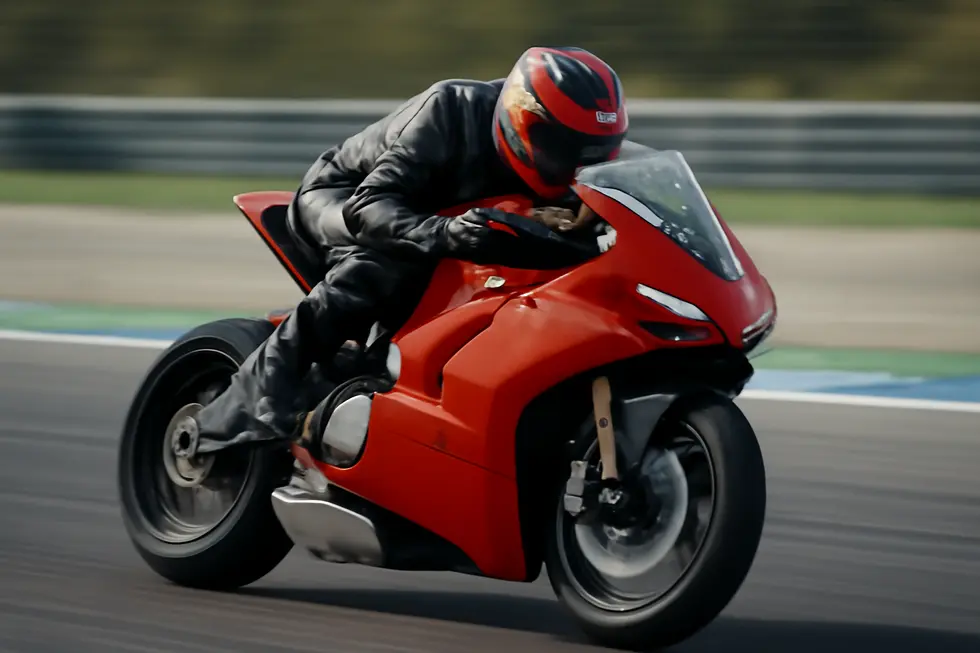Motorcycle Fairing Push Pins: The Backbone of Secure and Efficient Bodywork
October 14, 2025 | by summitfairings
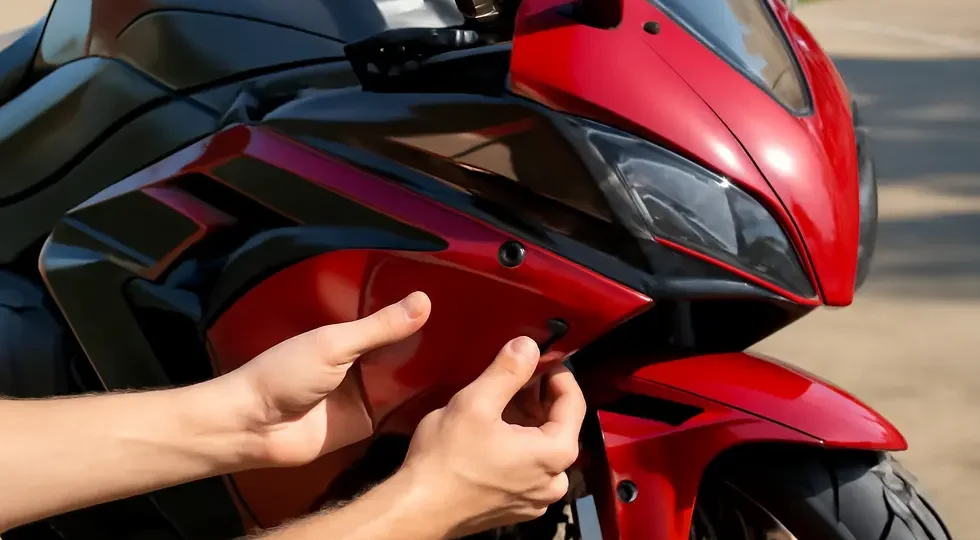
Introduction
Motorcycle fairing push pins serve as the crucial connecting elements that maintain the integrity and aesthetics of a bike’s bodywork. For business owners in the motorcycle industry, understanding these components is vital—not only for inventory and sales but also to advise customers or workshop clients on the importance of quality fasteners. Each chapter sheds light on an essential facet of push pins: from their functional role in securing panels, to specialized designs tailored for flagship models like the GL1800, their comparison to general automotive fastener kits, and the material quality considerations that influence longevity and reliability. This comprehensive insight equips professionals with both product knowledge and an appreciation for the subtle engineering behind these seemingly simple parts.
Tables of Contents
Chapter 1: Overview of Motorcycle Fairing Push Pins and Their Functional Role
- Engineering Excellence: Materials and Design in Motorcycle Fairing Push Pins
- Economic Significance and Accessibility of Motorcycle Fairing Push Pins in the Aftermarket Landscape
- Essential Maintenance and Practical Tips for Optimal Use of Motorcycle Fairing Push Pins
Chapter 2: Specialized Motorcycle Fairing Push Pins for Popular Models Like GL1800
- Engineering Precision: How Specialized Push Pins Enhance GL1800 Fairing Performance and Maintenance
- Precise Installation and Compatibility Essentials of Fairing Push Pins for GL1800 and Similar Motorcycles
- Balancing Strength and Cost Efficiency: Durable Push Pins Enhancing GL1800 Fairing Maintenance
Chapter 3: Comparing Motorcycle Fairing Push Pins with General Automotive Fastener Kits: Design and Material Insights
- Tailored Engineering and Material Innovation: How Motorcycle Fairing Push Pins Differ from Automotive Fastener Kits
- Precision and Performance: How Motorcycle Fairing Push Pins Outshine General Automotive Fasteners
- Balancing Strength and Flexibility: How Motorcycle Fairing Push Pins Stand Against Automotive Fastener Kits
Chapter 4: Material Characteristics and Quality Considerations in Motorcycle Fairing Push Pins
- Engineering Durability and Environmental Resistance in Motorcycle Fairing Push Pins
- Balancing Durability, Installation Ease, and Reusability in Top-Quality Motorcycle Fairing Push Pins
- Optimizing Performance and Style: Material Choices and Customization in Motorcycle Fairing Push Pins
Chapter 1: Overview of Motorcycle Fairing Push Pins and Their Functional Role
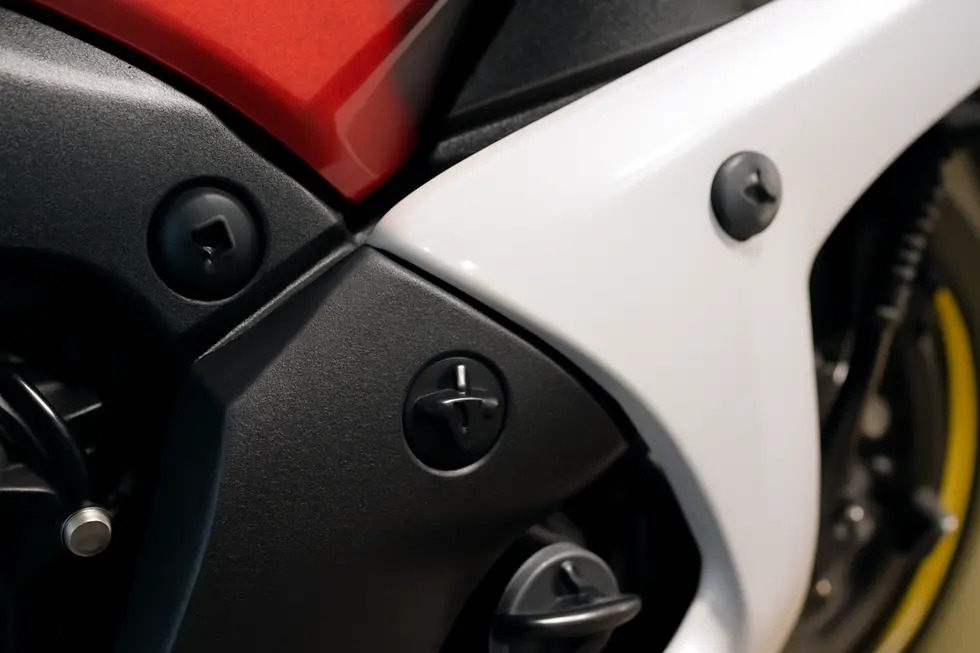
1. Engineering Excellence: Materials and Design in Motorcycle Fairing Push Pins
Motorcycle fairing push pins are engineered to fulfill a vital role in securely fastening panels while withstanding the demanding conditions of riding. The choice of materials is critical: most push pins utilize durable plastics like nylon or polycarbonate for their light weight, corrosion resistance, and flexibility, enabling a secure yet gentle hold that avoids damaging fairings. These plastics also allow for reusable designs that fit flush with body panels, preserving the bike’s sleek aerodynamic profile and preventing snags or drag. For applications requiring enhanced strength and longevity, metals such as aluminum or stainless steel are common. Often CNC machined and powder-coated, these metal pins resist corrosion and mechanical wear, catering to riders who prioritize performance and durability. Although composites like carbon fiber are rare in push pins themselves, their increasing use in fairing construction demands that push pins accommodate the unique properties of these materials without compromising fit and function.
Beyond materials, push pin design balances multiple functional requirements. A flush fit is essential to maintain the aerodynamic shape and clean aesthetics of the motorcycle. Equally important is the secure retention of panels against vibration and wind forces, ensuring components remain stable without rattling. Many push pins achieve this by combining a simple push-in or snap mechanism with reusability, allowing quick disassembly for maintenance without damaging the fairing or frame. Additionally, designs prioritize corrosion resistance through material selection and finishes, protecting against weather exposure, road debris, and chemicals. This combination of material excellence and thoughtful engineering ensures push pins provide reliable fastening, safeguard internal components, and uphold the motorcycle’s appearance.
To learn more about high-quality fairing components and compatible fasteners, explore dedicated resources at Explore the Best Motorcycle Fairings at Summit Fairings.
2. Economic Significance and Accessibility of Motorcycle Fairing Push Pins in the Aftermarket Landscape
Motorcycle fairing push pins hold a vital economic position within the motorcycle aftermarket industry. Despite their small size, these fasteners drive significant demand due to frequent maintenance, customization, and repair needs. Fairings often sustain minor damage or require removal for servicing, which keeps the need for push pins consistently strong. This demand fuels a robust market supporting numerous manufacturers, suppliers, and local retailers, thereby fostering job creation and contributing to regional economic activity.
Accessibility plays a key role in maintaining this economic momentum. Push pins are widely available through multiple channels, including expansive online marketplaces and specialized motorcycle parts retailers. This diverse presence ensures riders and mechanics can find model-specific fasteners, accommodating the unique designs of leading motorcycle brands. The availability of different materials and styles—from durable plastics to metal variants—caters to varying performance and aesthetic preferences.
This market dispersion supports both the do-it-yourself enthusiast and professional service sectors, streamlining repairs and upgrades alike. The reliable presence of these components not only sustains economic flow but also encourages continuous innovation in push pin designs that enhance durability and ease of use.
For those keen to explore a wealth of motorcycle fairing options that complement these essential fasteners, discovering comprehensive selections at specialized suppliers offers valuable insights into the variety and adaptability available in the aftermarket. Such resources are instrumental in supporting both the economic and functional roles that motorcycle fairing push pins fulfill.
3. Essential Maintenance and Practical Tips for Optimal Use of Motorcycle Fairing Push Pins
Motorcycle fairing push pins serve as critical fasteners that secure the bike’s body panels firmly in place while enabling efficient access during maintenance. Their design balances robust attachment with ease of removal, which is particularly important given the stressors faced by motorcycles—constant vibration, exposure to weather, and engine heat can all degrade these small components over time. Regular inspection is key; push pins made from plastic may become brittle or cracked, risking fairing looseness or rattling that compromises both safety and the bike’s sleek appearance.
Replacing these pins is generally simple and does not require specialized tools. Most push pins use a push-or-pull mechanism or require modest tools like a hex key. Gentle handling during removal helps prevent breakage, preserving the pins for possible reuse, although many should be replaced after removal due to plastic fatigue. This ease of removal facilitates routine tasks such as coolant changes or quick inspections, as fairings can be detached without drilling or damaging the bike.
In practical use, push pins offer a neat, secure fit that maintains ground clearance and avoids interference with the motorcycle’s frame. Selecting push pins tailored to the bike’s make and model ensures proper fit, enhancing durability and minimizing the risk of panels dislodging on the road. Many push pins are designed to be reused, but carrying spares is advisable to ensure seamless maintenance sessions.
Their role extends beyond mere fastening—they support the motorcycle’s aerodynamic efficiency and protect internal components by securing fairings reliably. Proper care of these fasteners not only maintains structural integrity but also simplifies customization and repair work. For in-depth guidelines on maintenance and push pin handling, checking manufacturer instructions or specialized repair blogs can provide valuable assistance.
For more insights on quality motorcycle components, exploring resources like Summit Fairings offers a comprehensive guide to selecting the right parts and accessories.
Chapter 2: Specialized Motorcycle Fairing Push Pins for Popular Models Like GL1800

1. Engineering Precision: How Specialized Push Pins Enhance GL1800 Fairing Performance and Maintenance
Specialized motorcycle fairing push pins play a critical role in both the aesthetic and functional maintenance of models such as the GL1800. These push pins are engineered to provide a secure attachment that resists the constant vibrations and wind stresses inherent to motorcycle operation, ensuring that fairings and body panels remain firmly in place under all riding conditions without compromising the bike’s sleek silhouette. A key design feature is their flush mounting capability, which preserves the aerodynamic profile that is vital to the GL1800’s performance and visual appeal. Beyond simply fastening parts, their construction prioritizes resilience through durable materials that resist weathering and mechanical wear, extending service life and reliability even during prolonged exposure to outdoor elements.
Ease of use is another cornerstone of these specialized push pins. Their design allows for effortless removal and reinstallation, which benefits riders and mechanics performing routine maintenance or custom modifications. Because these pins are often reusable, they provide a practical and cost-effective fastening solution that complements frequent upkeep without sacrificing strength or stability. This combination of durability, aerodynamic consideration, and user-friendly functionality underscores why tailored push pins are indispensable for maintaining the GL1800’s distinctive build.
Understanding the precise interaction between these pins and the motorcycle’s fairing panels is essential for anyone seeking to maintain the bike’s integrity or update its appearance. For a broader perspective on how to enhance or replace fairings while ensuring optimal fit and finish, exploring expert resources like this comprehensive motorcycle fairings guide offers valuable insight.
2. Precise Installation and Compatibility Essentials of Fairing Push Pins for GL1800 and Similar Motorcycles
Specialized motorcycle fairing push pins play a crucial role in maintaining the secure attachment of fairing panels while allowing for straightforward removal during maintenance. For models like the GL1800, the installation process begins with careful alignment of the push pin with pre-drilled holes on both the fairing and the motorcycle frame. Pressing the pin into place causes its legs to expand behind the panel, locking it firmly yet without causing damage. This expansion mechanism ensures that fairings stay securely fastened despite vibrations and the rigors of riding conditions.
Compatibility is equally important. Push pins must conform precisely to OEM specifications, including diameter, length, and materials, to avoid issues such as rattling, excessive wear, or damage to the fairing. Model-specific designs cater to the unique mounting systems of popular motorcycles like the GL1800, addressing their particular structural and aerodynamic requirements. Materials, often plastic or nylon, offer corrosion resistance and flexibility, while some variants incorporate metal reinforcements to enhance durability.
Careful verification of pin head style and size is essential when replacing or upgrading to ensure a seamless fit. Generic or incorrect fasteners risk compromising the fairing’s integrity and overall performance. Additionally, certain aftermarket push pins provide advanced features like UV resistance and simplified installation mechanisms, further improving longevity and ease of use.
Removal techniques typically involve gently prying or pulling the center section of the push pin to release the locking legs, enabling damage-free detachment. Consulting model-specific resources or parts suppliers enhances the accuracy of fitment and installation, supporting long-term maintenance.
For those seeking detailed product ranges and fitting guidelines, resources like Explore Summit Fairings: Your Go-To Destination for Motorcycle Fairings offer comprehensive information on compatible accessories that complement these specialized fasteners.
3. Balancing Strength and Cost Efficiency: Durable Push Pins Enhancing GL1800 Fairing Maintenance
Specialized push pins crafted for motorcycles such as the Honda GL1800 are engineered to withstand the demanding conditions of riding. These fasteners are typically made from high-quality plastics or composite materials designed to resist cracking, deformation, and wear caused by vibration and environmental exposure. Their flush-fitting construction allows seamless integration with fairings, minimizing stress points that could damage the panels during attachment or removal. This precision fit extends the life of both the push pins and the motorcycle’s bodywork, reducing the risk of costly repairs related to damaged fairings.
From an economic standpoint, the emphasis on reusability proves significant. Riders frequently remove fairings for maintenance, upgrades, or customization, making it vital that these push pins endure multiple installation cycles without losing effectiveness. Reusable pins eliminate the recurring expense of replacements while safeguarding the fairings themselves, which can be expensive to fix or replace if damaged due to ill-fitting or fragile fasteners. Moreover, a secure fairing fit enhances aerodynamic stability, indirectly contributing to rider comfort and fuel efficiency.
The availability of specialized push pins tailored to models like the GL1800 has also fostered a competitive market. This competition helps maintain reasonable pricing without compromising quality, allowing owners access to durable components that protect their investment. Ultimately, these push pins play a crucial role in preserving the motorcycle’s visual appeal and structural integrity over time, lowering overall ownership costs and minimizing downtime.
For riders seeking dependable fastening solutions tailored for their motorcycles, exploring dedicated fairing options can offer valuable insight and product variety, such as seen through comprehensive sources like summit fairings.
Chapter 3: Comparing Motorcycle Fairing Push Pins with General Automotive Fastener Kits: Design and Material Insights
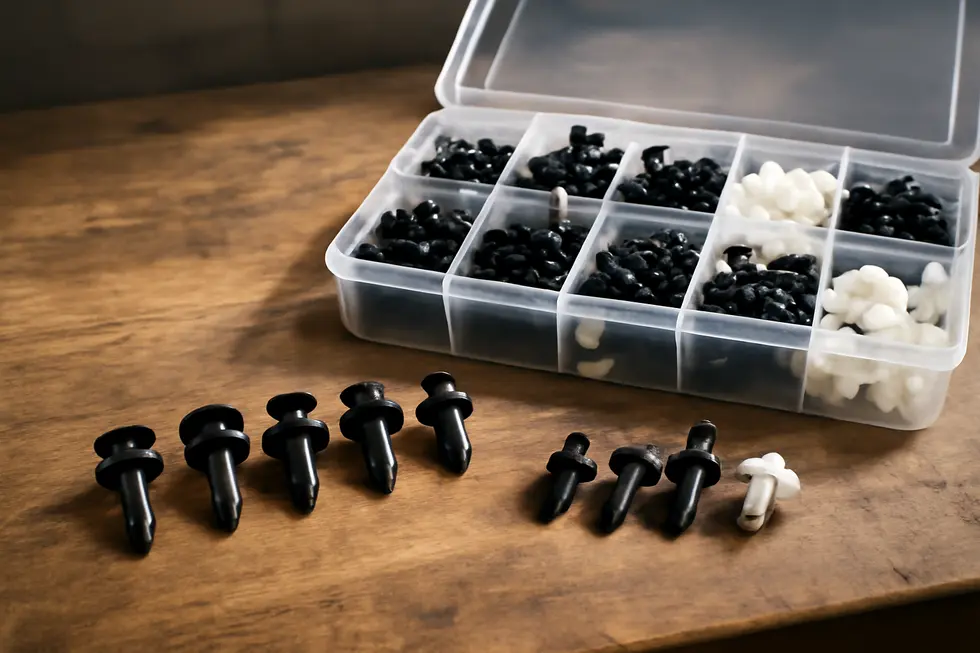
1. Tailored Engineering and Material Innovation: How Motorcycle Fairing Push Pins Differ from Automotive Fastener Kits
Motorcycle fairing push pins and general automotive fastener kits serve the critical role of securing parts but diverge significantly in design focus and material composition. Push pins made specifically for motorcycle fairings are precision-engineered to accommodate exact model requirements and panel contours, ensuring a secure fit that preserves the fairing’s aerodynamic profile and aesthetic integrity. This tailored engineering accounts for variations in panel thickness, mounting hole geometry, and the need for easy removal during maintenance without damage. The precision in size and retention style reflects the unique demands of motorcycle bodywork, where vibration and weather exposure are constant challenges.
In contrast, general automotive fastener kits are designed with versatility in mind. These kits include a broad array of clips, screws, and push pins intended to fit multiple automotive components, from engine bay elements to body panels. Their design prioritizes adaptability over specificity, often resulting in a one-size-fits-many approach. Materials vary widely, featuring metals such as high-tensile steel, aluminum alloys, stainless steel, and titanium to meet different strength and corrosion resistance needs. While robust, these fasteners may not align precisely with the delicate contours and requirements of motorcycle fairings.
Material choices highlight the differences further. Motorcycle push pins commonly use high-tensile plastics and nylon composites offering flexibility, UV, and corrosion resistance. These materials absorb vibrations and resist cracking during installation or while riding. Their lightweight nature also helps maintain motorcycle performance and aesthetics. Automotive fasteners, by contrast, often rely on metal alloys for enhanced strength and durability, sometimes at the expense of weight and subtle fit requirements.
The finely tuned balance of functionality, lightweight durability, and tailored fit in motorcycle fairing push pins underscores their specialized nature compared to the broader but less tailored design of general automotive fastener kits. For motorcycle enthusiasts seeking optimal fit and finish, choosing model-specific push pins is critical to maintaining both appearance and long-term reliability. For further insights into related motorcycle bodywork components, exploring detailed resources on affordable motorcycle fairings can offer valuable guidance.
2. Precision and Performance: How Motorcycle Fairing Push Pins Outshine General Automotive Fasteners
Motorcycle fairing push pins excel in delivering a precise fit, refined finish, and efficient installation process compared to general automotive fastener kits. Their design focuses specifically on the unique demands of motorcycle plastics and bodywork, ensuring that panels are secured firmly without compromising aesthetics or convenience. Unlike broad-range automotive fasteners, which often cater to heavier metal parts and require multiple tools, motorcycle push pins snap into place with ease, usually needing only finger pressure. This streamlined approach significantly reduces installation time and simplifies maintenance or customization tasks.
The fit of motorcycle push pins is highly tailored to the exact hole diameters and panel thicknesses found in fairings. This ensures a snug, vibration-resistant hold that prevents rattling or misalignment. The pins typically sit flush or slightly recessed, preserving the smooth, aerodynamic lines crucial to motorcycle design. In contrast, general automotive fasteners may leave gaps or create uneven mounting surfaces due to their less specialized sizing and construction.
Durability is another key advantage, as these push pins utilize plastic or nylon materials engineered to withstand constant vibration, weather exposure, and mechanical stresses inherent to riding conditions. While automotive kits might offer heavier-duty components, their over-engineered nature often adds unnecessary weight and complexity to motorcycle assemblies.
Aesthetic customization is also better served by motorcycle-specific kits, which often include colored or styled fasteners that complement a bike’s look. This focus on both function and form is rarely matched by general automotive fastener selections.
For enthusiasts seeking optimal balance in installation speed, fit quality, and appearance, dedicated motorcycle fairing push pins offer superior performance over generic automotive options. Exploring specialized accessories can enhance both maintenance ease and overall bike presentation. For further insights, see detailed discussions on motorcycle fairings here.
3. Balancing Strength and Flexibility: How Motorcycle Fairing Push Pins Stand Against Automotive Fastener Kits
Motorcycle fairing push pins are engineered with a focus on resilience and precision for securing lightweight body panels in demanding riding conditions. Typically fabricated from corrosion-resistant metals like stainless steel or aluminum, these push pins are crafted to endure vibration, weather exposure, and mechanical stress while maintaining a secure hold at high speeds. Their specialized design ensures panels stay firmly fastened yet remain easily removable, which is vital for maintenance and customization.
In contrast, general automotive fastener kits offer a wider selection of fasteners and tools intended for a variety of heavier-duty automotive uses. These kits commonly include components made from steel or chrome-plated steel, designed to meet the diverse requirements of car repairs, suspension adjustments, and structural modifications. While some fasteners in these kits may boast substantial robustness, their corrosion resistance and tailored fit for motorcycle applications can be less optimized compared to dedicated fairing push pins.
Regarding application scope, motorcycle push pins serve a distinct and focused purpose: securing fairings and trims with convenience and longevity. This specificity translates to efficient installation and reliable performance in the motorcycling environment. Conversely, automotive fastener kits cater to broader scenarios across multiple vehicle types, providing flexibility but sacrificing the fine-tuned compatibility necessary for motorcycle fairings.
This contrast reveals a trade-off between specialized durability and adaptable versatility. While automotive kits serve well for general repairs and modifications, motorcycle fairing push pins are indispensable for riders who prioritize precise fitment and lasting resilience in their bodywork fasteners. For those seeking to explore the variety and technical advantages of motorcycle fairing fasteners, check out the insights found in this detailed exploration of motorcycle fairings at Summit Fairings.
Chapter 4: Material Characteristics and Quality Considerations in Motorcycle Fairing Push Pins
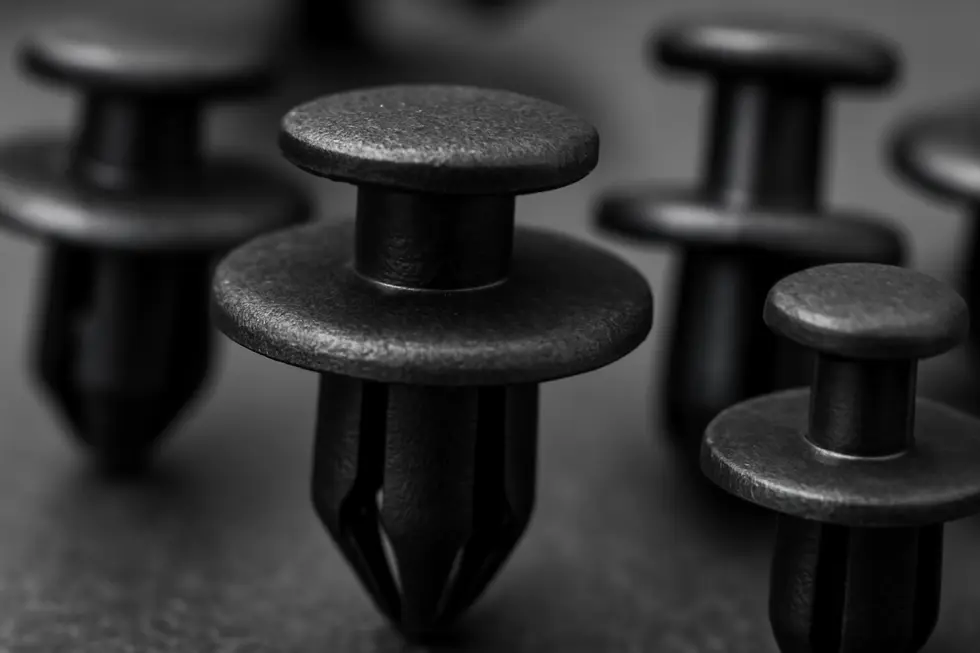
1. Engineering Durability and Environmental Resistance in Motorcycle Fairing Push Pins
Motorcycle fairing push pins are crafted primarily from high-quality nylon and specialized plastics, designed to offer a precise blend of durability, mechanical strength, and environmental resilience. These materials enable push pins to withstand the constant vibrations and impacts motorcycles face, while maintaining flexibility to prevent cracking or breaking during frequent panel removals and reinstallation. Nylon’s inherent resistance to corrosion, UV radiation, and moisture makes it ideal for outdoor exposure, enabling push pins to endure diverse weather conditions without losing performance or becoming brittle. This protection against environmental factors is crucial for maintaining the secure attachment of fairings, preserving the motorcycle’s aerodynamic profile and aesthetic integrity.
Beyond plastics, some premium fasteners incorporate marine-grade stainless steel or aluminum for enhanced strength and corrosion resistance, although these metals add weight and cost, making them less commonplace for fairing applications. The lightweight nature of nylon push pins contributes to overall motorcycle efficiency by reducing unnecessary weight, an important consideration for both performance and fuel economy.
The material engineering behind these push pins extends their service life, withstanding chemical exposure from road salts and grime, while the flexibility allows them to absorb shocks without compromise. Such characteristics ensure riders can confidently rely on them for consistent fastening through long-term use and changing environments. For those interested in understanding compatible options and detailed material specifications, exploring dedicated resources on motorcycle fairings offers valuable insights into selecting the right fasteners to match quality and durability requirements.
2. Balancing Durability, Installation Ease, and Reusability in Top-Quality Motorcycle Fairing Push Pins
Durability is paramount for motorcycle fairing push pins, as they endure constant vibration, weather exposure, and frequent removal during maintenance. Premium push pins utilize corrosion-resistant materials such as stainless steel or specially coated metals, ensuring long-lasting protection against rust and environmental wear. Precision manufacturing contributes to tight tolerances that keep panels securely fastened despite mechanical stress. Moreover, high-quality finishes not only improve aesthetics but also shield the fasteners from abrasion and oxidation, extending their service life.
Equally important is the ease of installation, especially for riders and mechanics who regularly access body panels. Superior push pins are crafted with intuitive designs that enable quick, tool-free insertion and removal. Many options come in pre-measured kits designed for specific motorcycle models, streamlining upgrades and repairs by eliminating guesswork and compatibility issues. Thoughtful engineering avoids problems like cross-threading or pin damage, promoting smoother maintenance cycles and reducing frustration.
Beyond initial use, reusability is a critical factor influencing cost-effectiveness and convenience. High-quality push pins are engineered to withstand multiple cycles without losing grip strength or suffering deformation. Materials like reinforced plastics and titanium ensure clips and springs remain resilient, resisting breakage through repeated stress. This durability supports ongoing maintenance and customization needs, lowering replacement frequency and improving overall user experience.
These qualities combined define the effectiveness of motorcycle fairing push pins, making them indispensable for maintaining both the appearance and functionality of motorcycle bodywork. For riders interested in exploring tailored options and understanding how fasteners integrate with overall fairing solutions, detailed insights are available in resources like the Explore the Best Motorcycle Fairings at Summit Fairings blog.
3. Optimizing Performance and Style: Material Choices and Customization in Motorcycle Fairing Push Pins
Motorcycle fairing push pins are engineered with materials that balance durability, resilience, and ease of use to reliably secure fairings in demanding riding conditions. Typically crafted from engineered plastics like nylon or other robust polymers, these push pins offer critical attributes such as flexibility to endure repeated installations without cracking, and corrosion resistance that prevents deterioration from exposure to moisture and road salts. Their lightweight nature helps maintain the bike’s overall balance without adding unnecessary weight to the bodywork.
Customization is an integral aspect of push pin design, allowing riders and mechanics to select options that align with both functional needs and aesthetic tastes. Push pins vary in size to accommodate specific panel thicknesses and mounting hole dimensions, ensuring a snug fit that resists vibration-induced loosening. Color variations enable matching or contrasting with the motorcycle’s paint scheme, providing subtle personalization or enhancing visual appeal. Some designs incorporate reusable features, crafted to be removed and reinstalled multiple times without damage, streamlining maintenance and upgrades.
While high-performance fairings may use advanced composites, the fasteners themselves prioritize cost-effective, durable plastics that meet operational demands. Reinforced polymers and specialty composites can be selected for enhanced strength where needed, but the prevailing emphasis is on ensuring secure attachment and easy handling. For example, colored snap clips tailored to OEM specifications lock panels effectively while visually complementing brand-specific designs.
This careful integration of material science and customization ensures that motorcycle fairing push pins not only hold components firmly under dynamic conditions but also support ongoing servicing and personal style choices. More insights on compatible accessories and upgrades can be explored through the detailed resources available at the Summit Fairings blog.
Final thoughts
Motorcycle fairing push pins may appear as small, inconspicuous components, but their role in maintaining a motorcycle’s structural integrity, aesthetics, and accessibility is indispensable. For business owners, recognizing the value of quality push pins—especially model-specific variants designed for premier motorcycles like the GL1800—can enhance inventory decisions and customer satisfaction. Differentiating between dedicated motorcycle fasteners and broader automotive kits clarifies the necessity for specialized products, and understanding the material properties ensures only reliable, durable pins make it to the market or workshop bench. Armed with this knowledge, businesses can confidently supply fasteners that uphold both performance and style, laying the groundwork for repeat customers and satisfied riders.
Ready to elevate your ride? Summit Fairings delivers premium, custom-fit fairings that blend style and durability. Whether you’re chasing speed or turning heads, we’ve got your bike covered. Don’t wait—transform your machine today. Click, customize, and ride with confidence. Your perfect fairing is just a few clicks away. Act now!
About us
undefined
RELATED POSTS
View all

